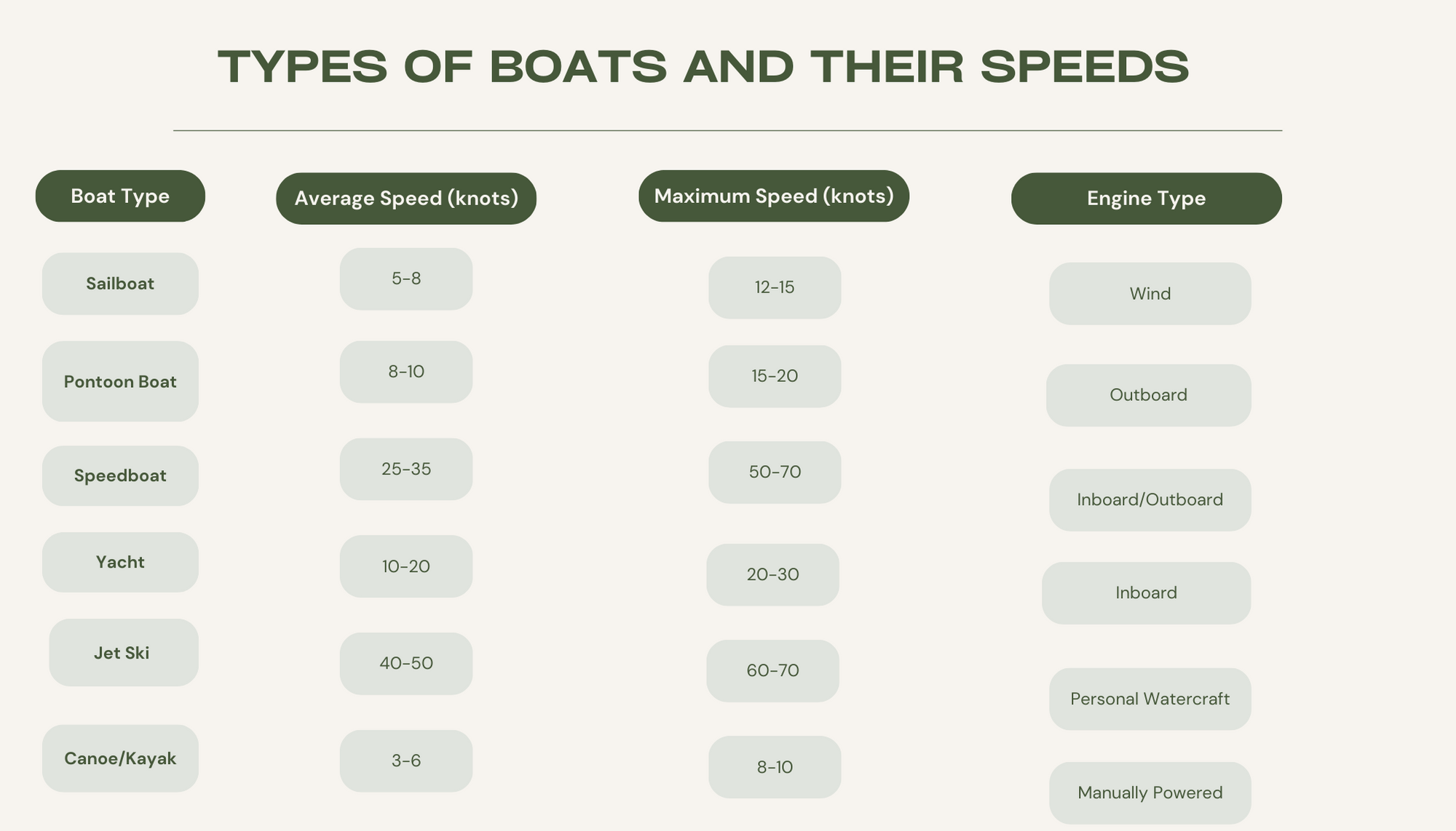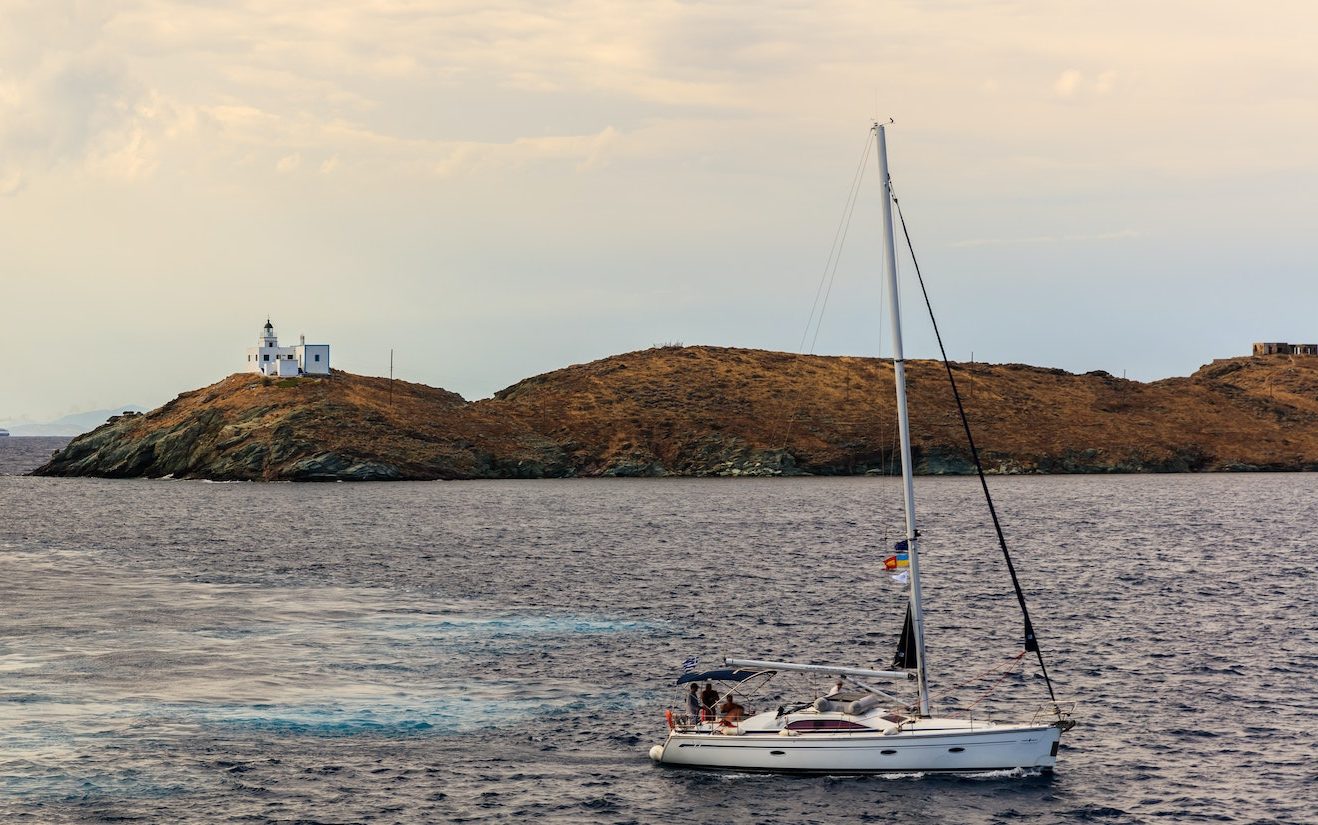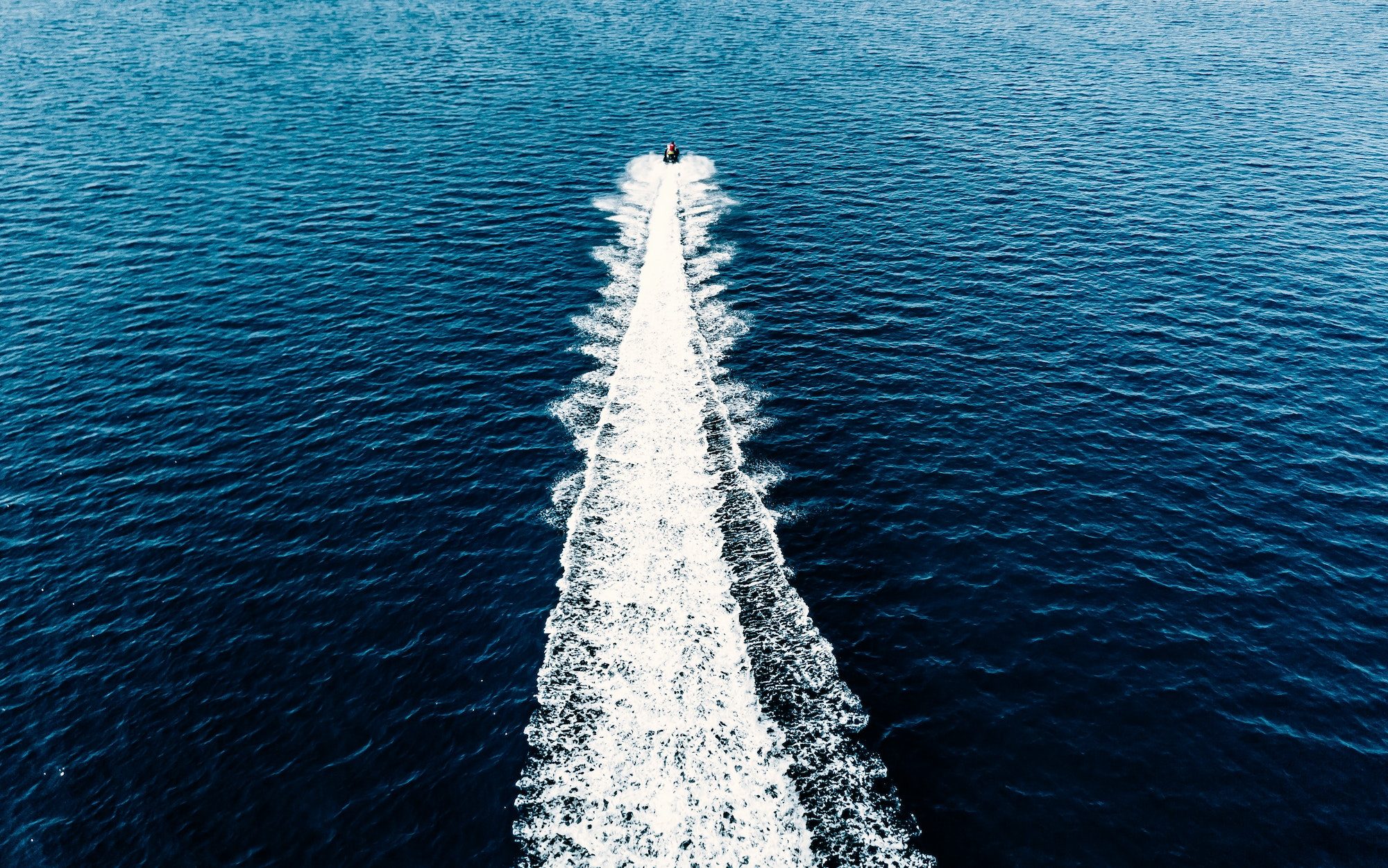Boats have always captivated our imagination, evoking a sense of wonder with their seamless movement across the water, combining speed and elegance in a unique way. Whether you find yourself enthralled by the art of sailing, enthused by the power and exhilaration of speedboats, or simply curious about the diverse capabilities of various types of boats, delving into the realm of boat speed is an intriguing pursuit. In this article, we will embark on a journey to explore the multifaceted factors that influence a boat’s velocity, the distinct categories of boats and their characteristic speeds, astonishing world records achieved in the pursuit of speed, and, perhaps most importantly, the crucial safety considerations that accompany high-speed boating.
Types of Boats and Their Speeds
Different types of boats are designed for specific purposes, and their speeds can vary greatly. Let’s explore some common categories of boats and their typical speeds.
Recreational Boats
Recreational boats, such as fishing boats or small runabouts, are designed for leisure activities on the water. They generally have moderate speeds ranging from 10 to 40 miles per hour (16 to 64 kilometers per hour). These boats prioritize comfort, stability, and versatility rather than outright speed.
Speedboats
Speedboats are built for high performance and exhilarating speed. They can reach impressive speeds ranging from 40 to 100 miles per hour (64 to 161 kilometers per hour). These sleek and agile vessels often feature powerful engines, streamlined designs, and specialized hulls to maximize speed and maneuverability.
Yachts
Yachts are luxurious and spacious vessels designed for cruising and entertaining. While they may not prioritize speed as much as other boat types, modern motor yachts can still achieve speeds of 20 to 50 miles per hour (32 to 80 kilometers per hour). Yachts are designed to offer comfort, style, and long-range capabilities for extended trips on the water.
Sailboats
Sailboats harness the power of the wind to propel themselves, and their speeds can vary depending on the wind conditions and boat size. Smaller sailboats can reach speeds of 5 to 10 knots (6 to 12 miles per hour or 9 to 19 kilometers per hour), while larger racing sailboats can achieve speeds of 15 to 25 knots (17 to 29 miles per hour or 28 to 46 kilometers per hour).

Factors Affecting Boat Speed
Several factors contribute to a boat’s speed, and understanding them can provide valuable insights into the performance of different vessels.
1. Hull Design
The design of a boat’s hull plays a crucial role in its speed and efficiency. Hulls can be designed for different purposes, such as planning hulls for speedboats or displacement hulls for sailboats. Factors like hull shape, width, length, and weight distribution influence a boat’s ability to cut through the water and achieve higher speeds.
2. Engine Power
The power of a boat’s engine is a significant determinant of its speed. The engine’s horsepower and torque directly impact how quickly the boat can accelerate and maintain its top speed. Higher-powered engines are generally found in speedboats and racing vessels, allowing them to reach impressive speeds.
3. Weight and Size
The weight and size of a boat affect its speed and maneuverability. Lighter and smaller boats tend to have higher speeds due to reduced drag, while larger and heavier vessels may sacrifice some speed for stability and capacity. The materials used in the boat’s construction, such as fiberglass or aluminum, also influence its weight and overall performance.
4. Water Conditions
The water body conditions in which a boat operates can significantly impact its speed. Calm and still waters provide optimal conditions for achieving higher speeds, whereas rough or choppy waters can slow down a boat and make navigation challenging.
5. Propeller Efficiency
The efficiency of a boat’s propeller affects its speed and acceleration. Factors like the number of blades, pitch, and material influence the propulsion efficiency and, ultimately, the boat’s speed. Propellers come in various designs and sizes, each offering different performance characteristics.

Safety Considerations
When operating a boat, safety should always be a top priority. Here are some important safety considerations to keep in mind:
- Always wear a life jacket or personal flotation device (PFD) when on a boat, regardless of the speed or conditions.
- Follow all local laws and regulations regarding boating, including speed limits and navigation rules.
- Be mindful of other vessels, swimmers, and obstacles in the water to avoid collisions.
- Maintain regular maintenance and inspections of your boat to ensure its safety and performance.
- Consider taking a boating safety course to improve your knowledge and skills.
By prioritizing safety, you can enjoy the thrill of boating while minimizing risks and ensuring a positive experience for everyone on board.

Boat Speed Records and Achievements
Outright Speed Record: The current outright speed record for a boat is held by the Spirit of Australia, piloted by Ken Warby. On October 8, 1978, Warby reached a speed of 511.11 kilometers per hour (317.60 miles per hour) at Blowering Dam in Australia. This record still stands today.
Sailboat Speed Record: The current record for the fastest sailboat is held by the Vestas Sailrocket 2. On November 24, 2012, Paul Larsen piloted the Vestas Sailrocket 2 to a peak speed of 65.45 knots (121.21 kilometers per hour or 75.45 miles per hour) over a 500-meter course in Walvis Bay, Namibia.
Powerboat Speed Record: The current powerboat speed record is held by the Team Australia boat, which achieved a top speed of 511.11 kilometers per hour (317.60 miles per hour) on November 20, 2018. The record-breaking run took place on Lake Dumbleyung in Western Australia.
Transatlantic Crossing Record: The current record for the fastest transatlantic crossing by a sailing boat is held by the trimaran IDEC SPORT, skippered by Francis Joyon. On June 26, 2017, Joyon completed the crossing from Ambrose Light in New York to Cape Lizard in the United Kingdom in just five days, 2 hours, 7 minutes, and 42 seconds.
Around-the-World Sailing Record: The current record for the fastest circumnavigation of the world by a sailing vessel is held by IDEC SPORT, skippered by Francis Joyon. On January 26, 2017, Joyon and his crew completed the journey in just 40 days, 23 hours, 30 minutes, and 30 seconds.
Solo Transatlantic Record: The current record for the fastest solo transatlantic crossing by a monohull sailboat is held by Alex Thomson on Hugo Boss. On July 16, 2017, Thomson completed the crossing from Ambrose Light in New York to The Lizard in the United Kingdom in 8 days, 22 hours, 8 minutes, and 28 seconds.

FAQs
What is the world record for the fastest boat?
The world record for the fastest boat is a boat that can travel at a speed of over 450 miles per hour. The previous world record was set by a boat that could travel over 371 miles per hour.
The current world record holder is a boat that can travel over 317 miles per hour. This is an incredibly fast speed for a boat, and it is a testament to the engineering and design of these boats.
What are the fastest boats?
The fastest boats in the world, such as hydroplanes and catamarans, can reach speeds of over 200 mph. This speed is due to their lightweight hulls for quick acceleration and turning. Their light weight also makes them less stable, but this is countered by using a large wing or sponsons that provide stability at high speeds. The fastest boat in the world is currently the H1 Unlimited Hydroplane. It can travel at speeds of over 300 mph!
What are the slowest boats?
There are a few different types of boats, and each style has its own average speed. The slowest boats are sailing, racing, go-fast, and production boats. The fastest boats are jet skis, hydrofoils, and hovercrafts.
Sailing boats: the average speed of a sailing boat is about 5 knots (6 mph). That’s about the speed of a brisk walk.
Racing boats: racing boats are designed to go as fast as possible, reaching speeds up to 80 knots (92 mph).
Do boats go faster than cars?
No, boats go slower than cars because water is denser than air. The main reason behind the slowness of a boat is friction.
Boats must push water out of the way to move, creating resistance. The faster a boat goes, the more resistance it experiences.
On the other hand, cars travel through the air, which is much less dense than water. This means that they don’t have to work as hard to move forward and can reach high speeds relatively easily.
Are 24 knots fast for a boat?
The average speed for a boat is 5 knots. However, the maximum speed for a sailboat is 185 km or 115 miles. So, 24 knots would be considered fast for a boat.
Can boat speed be increased by modifying the engine?
Yes, upgrading the engine or modifying its components can increase a boat’s speed. However, it’s essential to ensure the modifications are legal, safe, and within the manufacturer’s guidelines.
Are there any speed restrictions on the water?
Yes, different bodies of water have speed limits and regulations in place to ensure safety. It’s important to be aware of and abide by these restrictions.
What are the risks of traveling at high speeds on a boat?
Traveling at high speeds on a boat carries risks such as reduced maneuverability, increased potential for accidents, and the need for advanced skills and experience. Adhering to safety guidelines and using proper equipment is crucial to mitigate these risks.

